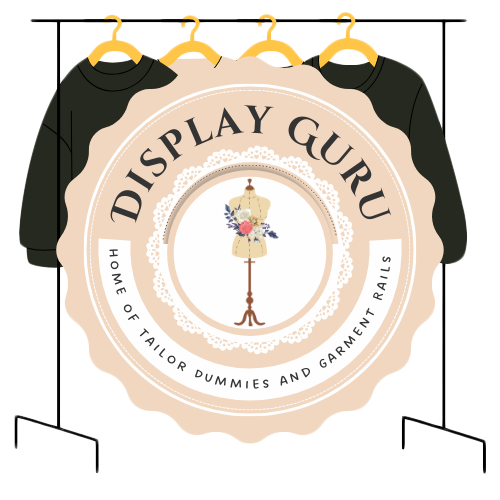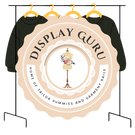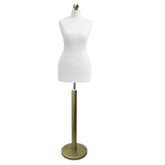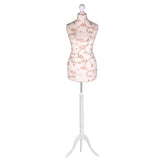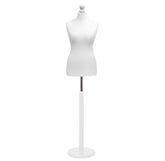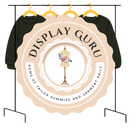A Guide to Display Stands for Clothing
In the fiercely competitive world of fashion retail, the right display stands for clothing are so much more than simple fixtures. Think of them as your most valuable silent salespeople. They’re the storytellers of your brand, the architects of your customer's journey, and a powerful tool that can genuinely boost your sales.
The Secret Weapon of Modern Retail
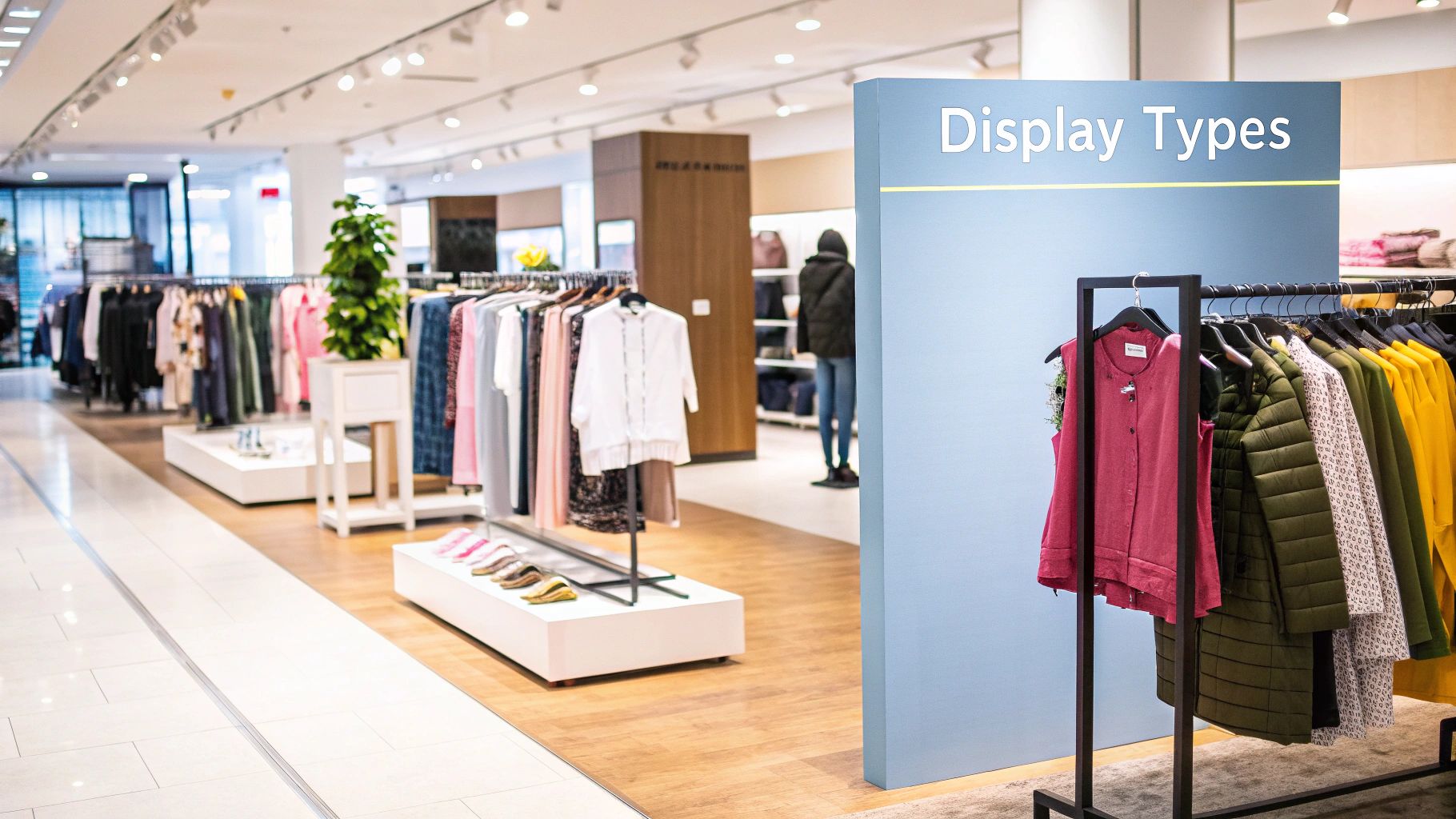
In an age where online shopping is king, physical stores have to offer something more. They need to become immersive destinations. The right display stand doesn’t just hold clothes; it spotlights collections, guides shoppers through your space, and turns a simple visit into a memorable experience. It's all about creating an atmosphere that a digital screen simply can't match.
This guide is designed to give you a complete framework for making smart, impactful decisions about the fixtures that will define your retail space and drive your success. We're moving way beyond the basic idea of a clothing rack to show you how strategic displays really work.
Why Your Displays Matter More Than Ever
Let's face it, the retail environment is crowded. The UK apparel market is a perfect example of this. With clothing retail sales jumping by around 7% in 2023 and the total market value hitting an estimated £64.5 billion, the competition is intense. This pressure means retailers must elevate their in-store experience to grab and hold onto customer attention.
Your displays are the very first physical point of contact you have with a potential customer. They need to do more than just show off your stock; they must instantly communicate your brand's value, quality, and identity.
Your display stands are the stage upon which your products perform. A well-designed stage elevates the entire production, making every item seem more desirable and turning passive browsing into active purchasing.
Integrating Displays into Your Overall Strategy
Thinking of your physical shop as an island is a huge missed opportunity. In today's retail world, your brick-and-mortar presence is a critical piece of a much larger puzzle. The way you present your collections on the shop floor needs to harmonise perfectly with your online marketing and social media campaigns.
This unified approach builds a consistent brand message everywhere your customer interacts with you. For example, if you're highlighting a new collection on Instagram, it absolutely must be the star of the show on a focal point display in-store. This creates a seamless journey for the customer, validating their interest and making the path to purchase feel effortless and natural. A strong in-store experience is a cornerstone of any successful multi-channel marketing strategy.
The end goal is to build a cohesive brand world where every single element, from a social media post to your in-store retail display stands, works in perfect sync. To start laying the groundwork for this kind of environment, take a look at our foundational guide: https://www.displayguru.co.uk/blogs/news/retail-display-stands.
A Visual Guide to Clothing Display Stands
When it comes to fitting out your shop, think of your display stands as your essential toolkit. It's not just about having somewhere to hang clothes; it's about choosing the right tool for the job. Each type of stand has a specific purpose, designed to present garments in a way that resonates with your brand, complements the clothing's style, and guides how customers move through your space.
Let's break down the most common types of stands, looking at their unique strengths and where they shine. This will help you match the perfect hardware to your inventory.
Garment Rails and Racks
First up, the absolute workhorse of any clothing store: the garment rail. These come in all shapes and sizes, from minimalist single-bar rails to more complex multi-arm racks, and they form the backbone of your retail display.
- Single Rails: These are brilliant for showing off a tightly curated collection, a specific colour story, or a full size-run of a hero product. Their simple design keeps the focus exactly where it should be—on the clothes themselves.
- Four-Way Racks: With four arms, often set at different heights, these stands are fantastic for breaking up the monotony of a shop floor. You can display four different but coordinating pieces from a collection, encouraging shoppers to walk around and explore from every angle.
The main job of these fixtures is to make your core stock as visible and accessible as possible. After all, organised and easy-to-browse racks are proven to improve the customer experience, reducing frustration and keeping people in your store for longer.
Speciality Display Stands
Moving beyond the standard rails, speciality stands are where you can inject some real personality and merchandising muscle into your layout. They create visual interest and help you tell a more compelling story about your products.
Think of these as your feature players. While garment rails hold the bulk of your stock, speciality stands create focal points that capture the eye and spotlight key pieces.
The most successful retail spaces are layered. They combine high-capacity racks with unique, eye-catching displays to create a rhythm that guides the customer's eye and makes the shopping experience more engaging.
Spiral racks, for example, can display a surprisingly large number of items in a compact footprint. They create a "waterfall" effect that’s perfect for showing off all the different colours of a t-shirt or blouse. Tiered displays and nesting tables are ideal for folded items like jumpers and trousers, or for creating an abundant-looking pyramid of products that still feels neat and organised.
This chart illustrates just how much effective display stands can contribute to your bottom line.
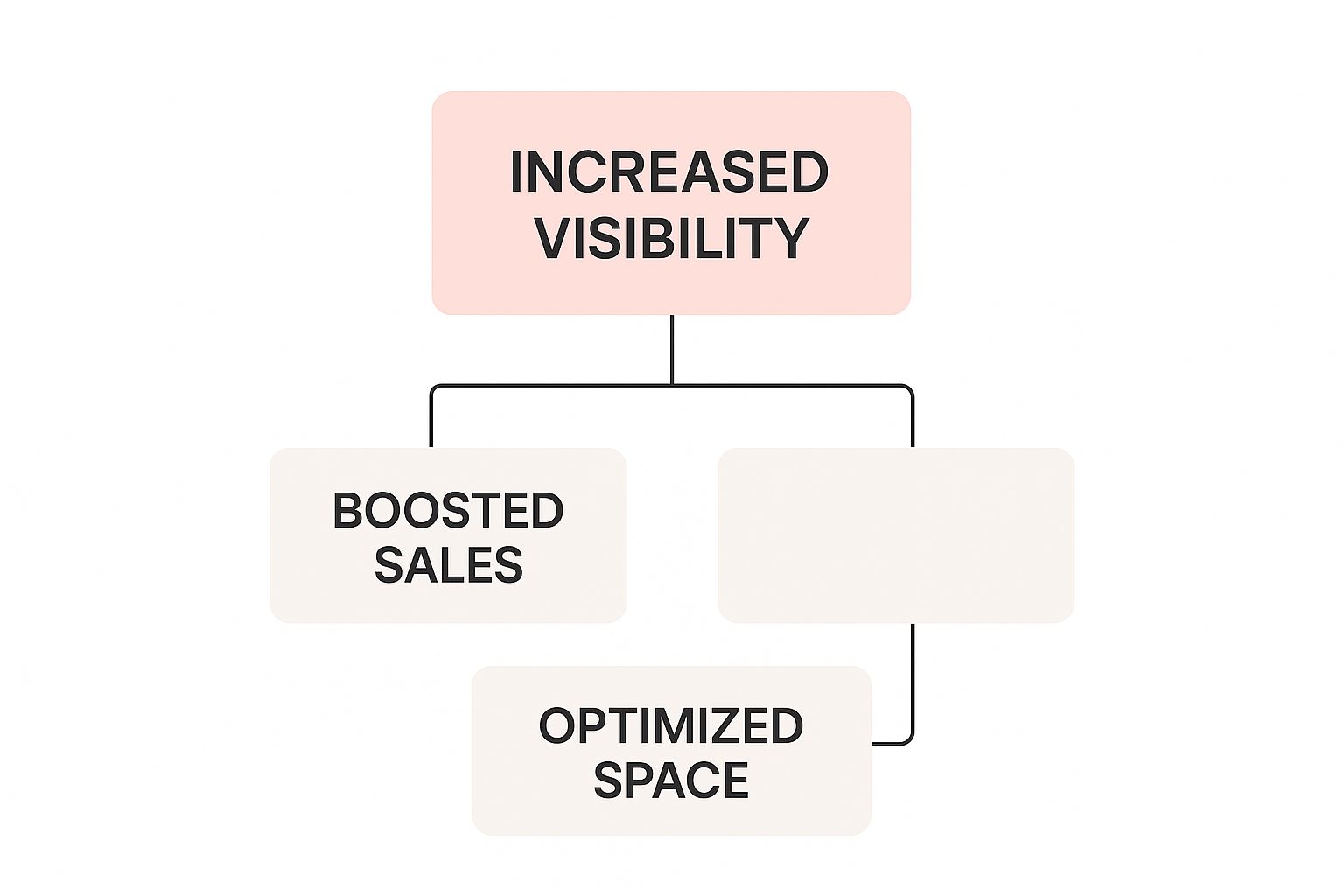
As you can see, it's a clear chain of events: better visibility directly leads to increased sales and more efficient use of your precious floor space.
The Human Element: Mannequins and Body Forms
No guide on clothing displays would be complete without mentioning mannequins and body forms. These are, without a doubt, your most powerful tools for showing customers what your clothes actually look like on a person. They give the context, shape, and style that a simple hanger just can't compete with.
Mannequins can be used to:
- Create Powerful Window Displays: A brilliantly styled mannequin is often a customer's very first impression of your shop.
- Showcase Complete Outfits: They give you the chance to cross-merchandise by putting a top with trousers, a scarf, and a bag, inspiring shoppers to buy the entire look.
- Define Your Brand's Style: The type of mannequin you choose—from hyper-realistic to sleek and abstract—says a great deal about your brand’s personality.
For a closer look at specific fixtures, our article on clothing display racks offers more detailed insights and practical examples.
Finally, don't forget wall-mounted systems. These are essential for making the most of your vertical space. By drawing the eye upward, they're perfect for creating permanent displays for categories like denim or outerwear. When you combine floor fixtures with smart wall systems, you create a dynamic, multi-level environment that feels both professional and thoughtfully designed.
How to Choose the Right Stands for Your Store

Choosing the right display stands for clothing is one of those crucial decisions that goes way beyond simple aesthetics. It’s about physically shaping your brand and telling your story without uttering a single word. The fixtures you pick are the foundation of your customer’s in-store experience, guiding everything from how they move through the space to what they ultimately buy.
Think of it like casting a play; every stand has a specific role. Your job is to assemble the perfect cast to bring your brand’s narrative to life. This means looking closely at the materials, the practical function, and how each piece fits into the overall atmosphere you want to create.
Aligning Materials with Your Brand Identity
The material of your display stands sends an immediate, powerful message. It's a visual and tactile cue that needs to be in perfect harmony with your brand's personality and the clothes you sell. When you get this right, you create a cohesive and immersive world for your customers.
- Industrial Metal: Raw steel or black powder-coated metal rails project a modern, urban, or edgy vibe. They're a natural fit for streetwear, denim collections, or minimalist brands that lean into strength and simplicity.
- Warm Wood: Fixtures crafted from natural or reclaimed wood build a sense of warmth, authenticity, and craftsmanship. This material is ideal for boutiques focused on artisan goods, heritage brands, or eco-conscious fashion.
- Sleek Acrylic: Clear or coloured acrylic offers a clean, contemporary, and almost invisible look. This makes it excellent for showcasing luxury items or vibrant, colourful garments, as it ensures the product itself is the undisputed star.
This isn't just about what looks nice; it’s about storytelling. A heavy, industrial iron stand would feel completely out of place in a shop selling delicate lingerie, just as a light acrylic stand might get lost in a store focused on rugged outerwear.
Functionality and Practical Considerations
Beyond your brand identity, your display stands have to work hard for you. Practicality is king in a busy retail environment. Taking the time to evaluate the functional side of each fixture will save you a world of headaches—and money—down the line.
You're aiming to invest in functional, long-lasting assets that create an inviting shopping experience. To explore this topic further, you can find a wealth of information in our comprehensive guide on choosing the right clothing display stands.
The best retail fixtures are a perfect marriage of form and function. They should not only look the part but also be durable enough for daily use, flexible enough for seasonal changes, and designed to make your products shine.
Before you make any purchasing decisions, consider these three key functional areas:
- Durability: Can the stand handle the daily grind and the weight of your heaviest items? For instance, industrial-grade steel is a must for displaying heavy winter coats, whereas lighter garments won’t need such robust support.
- Mobility: Do you need to change your layout often? Stands with lockable wheels offer incredible flexibility, letting you easily refresh your floor plan for new collections, sales events, or seasonal promotions.
- Modularity: Can the display system grow and adapt with your business? Modular fixtures with interchangeable parts allow you to adjust heights, add shelves, or change configurations as your inventory and needs evolve.
A Checklist for Making Your Final Decision
To help you choose with confidence, run through these essential questions before you invest in any new display stands for clothing. Think of it as your final gut check.
Essential Questions for Choosing a Stand:
- Does it support the product? Think about weight, size, and whether the item looks best hung or folded.
- Does it enhance or distract? The stand should be a supporting actor, never stealing the spotlight from the clothing.
- Can I reconfigure it easily? Consider seasonal changes and the need to keep your shop looking fresh and interesting.
- Does it fit my floor plan? Make sure there’s plenty of room for customers to browse comfortably without feeling cramped.
- Does it reflect my brand's price point? Premium fixtures can subtly elevate the perceived value of your products.
By carefully weighing your brand identity, functional requirements, and the answers to this checklist, you can select stands that are more than just furniture. They become powerful tools that actively build your brand and boost your success.
Designing Your Store for Maximum Impact
Having the perfect set of display stands for clothing is a brilliant start, but the real magic happens when you arrange them with thought and purpose. An effective store layout is what turns a casual browser into a loyal customer. It’s all about creating an intuitive, visually appealing journey from the moment they walk through your door.
Think of your shop floor like a well-designed website. It needs clear navigation, powerful focal points, and a logical flow that makes finding—and falling in love with—your products an absolute pleasure. This is where the art and science of visual merchandising come into their own, transforming your space into a genuine experience.
Create Powerful Focal Points
First things first, you need to establish strong focal points. These are the eye-catching displays that immediately grab a customer’s attention, pulling them deeper into your store. A well-placed mannequin styled with your latest collection, a vibrant display table near the entrance, or a dramatically lit wall display can all do the job perfectly.
Your focal point is your big opening statement. It should shout about your most exciting new arrivals or a must-have, complete look. This isn't just about showing off a product; it’s about setting the tone for the entire shopping trip and making a promise of what’s to come.
This strategy is especially crucial in the UK's competitive retail clothing scene. With 41% of Brits who bought clothes in the last year doing so online, physical stores need to offer something more. Retailers are investing heavily in creating compelling in-store environments to stand out, making the shop a vital hub for customer engagement and brand building. You can find more analysis on the UK clothing market at marketreportanalytics.com.
Apply the Pyramid Principle
Once your main focal points are in place, apply the pyramid principle to your smaller displays, especially on tables and shelving units. This is a classic visual merchandising technique that the human eye finds naturally balanced and appealing. It simply means arranging items to form a rough triangle or pyramid shape.
Just place the tallest item in the centre and have smaller items cascade down on either side. This creates a natural visual hierarchy that guides the eye smoothly across the display, avoiding a flat, uninspired line of products. It’s a remarkably simple way to make any arrangement of folded clothes or accessories look instantly more professional and curated.
Good visual merchandising is like telling a story. Each display is a chapter, building on the last, with a clear beginning (focal point), middle (browsing path), and end (the till point). The goal is to make the plot so engaging that customers want to see it through to the finish.
Design a Natural Customer Path
How do you actually want people to move through your shop? The layout of your clothing display stands should create an intuitive path, often leading them on a circular journey around the store. This ensures they see the maximum amount of merchandise without feeling lost or hemmed in.
Use your larger fixtures, like long garment rails, to create the main 'roadways'. Then, place smaller displays, like four-way racks or nesting tables, as interesting 'stops' along the way. Crucially, leave plenty of room—at least three to four feet—for a clear and comfortable walkway. Nothing puts shoppers off faster than a cramped, cluttered layout. Our expert guide has more valuable tips on optimising your layout with effective visual merchandising guidelines.
Group Items to Tell a Story
Randomly placed clothing just confuses customers. Instead, use your stands to tell cohesive stories by grouping items strategically.
- Group by Colour: Create a powerful visual impact with colour blocking. A rail dedicated entirely to black pieces or a table featuring a gradient of blues is simple yet incredibly effective.
- Group by Collection: Display entire collections together to showcase a specific trend or seasonal theme. This is a great way to encourage shoppers to buy complete outfits.
- Group by Style: Organise your shop into logical zones. Think of a casual wear section, a workwear area, or an evening wear corner. This makes the shopping process far easier for customers on a specific mission.
Finally, never underestimate the power of negative space and strategic lighting. A cluttered shop floor overwhelms the senses and makes everything look less valuable. Leaving empty space around your displays gives them room to breathe and makes them feel more premium. Use spotlights to highlight your key focal points and make your hero products truly shine. By combining these principles, you can create a space that is not only beautiful but also built to sell.
Keeping Your Displays Fresh and Relevant
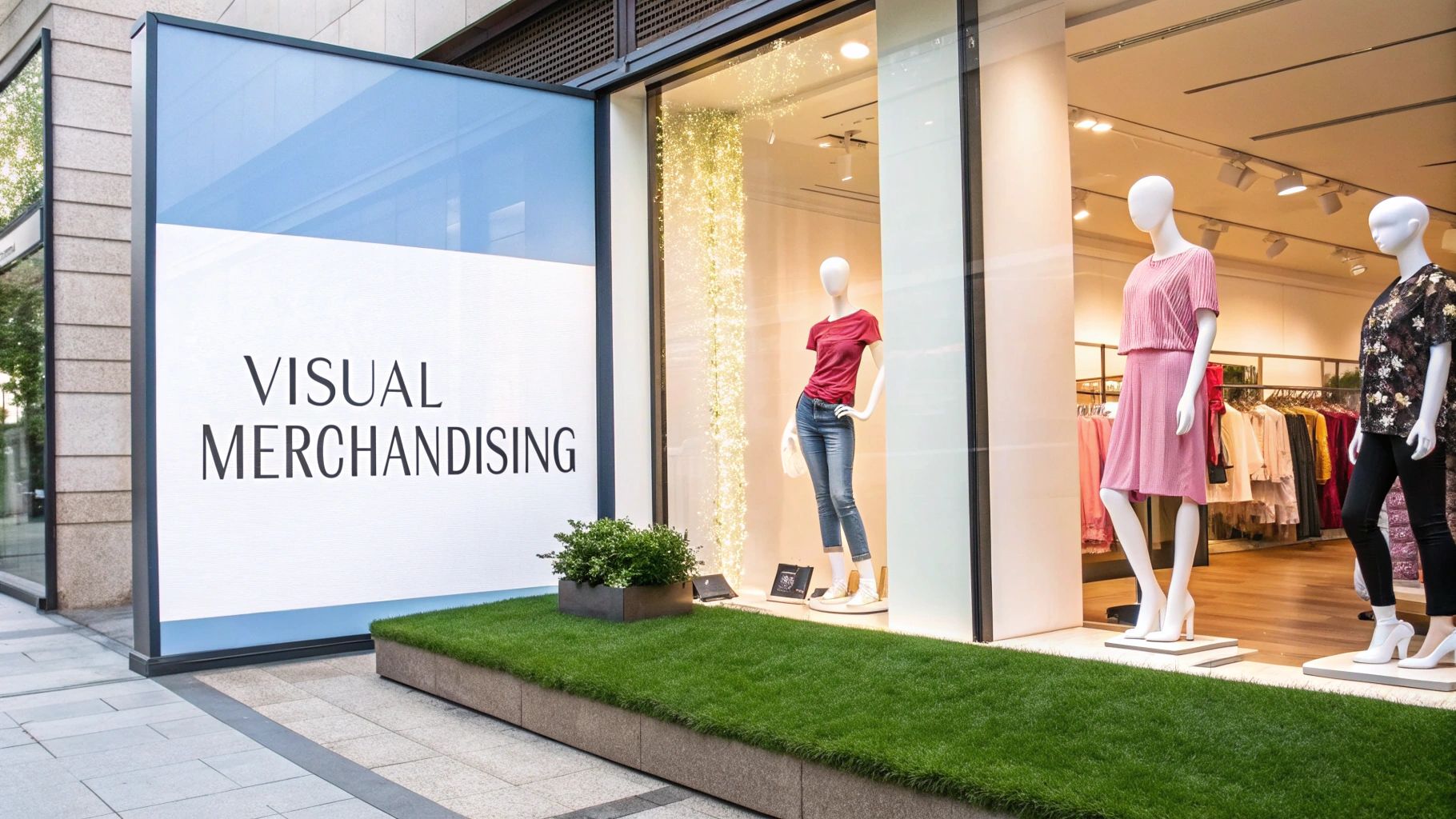
A static shop floor quickly becomes an invisible one. In the fast-paced world of fashion, your retail space needs to evolve just as quickly as the trends you sell. Keeping your visual merchandising dynamic isn’t just about staying current; it’s about giving repeat customers a new reason to explore every time they walk through your doors.
This means adapting your display stands for clothing to reflect changing seasons and new promotions, all without needing a costly, full-scale refit. The secret lies in building a system that’s as agile as the industry itself. A display that showcases heavy winter coats one month should be able to elegantly present light summer dresses the next.
This adaptability is more crucial than ever. With the rapid cycle of fashion and the UK's appetite for frequent wardrobe updates, retailers need versatile displays that can handle diverse styles and quick stock rotation. It’s no surprise that UK retailers are actively seeking modular and customisable options to sharpen their merchandising, improve the shopper experience, and ultimately, drive sales.
The Power of Flexible Fixtures
The key to a perpetually fresh retail space is the flexibility of your fixtures. Mobile and modular display stands are your greatest allies here. Think garment rails on wheels, nesting tables that can be reconfigured in moments, and adjustable shelving systems. These pieces give you the power to transform your layout in hours, not days.
Imagine a new collection arrives. With mobile racks, you can instantly create a focal point right at the entrance to spotlight the latest pieces. When a promotion starts, you can quickly group sale items on dedicated stands to draw the eye and clear stock efficiently. This agility allows you to be reactive and opportunistic, capitalising on every retail moment.
Your store layout should be a living, breathing entity, not a fixed blueprint. The ability to quickly adapt your displays allows you to tell new stories, highlight different products, and maintain a sense of excitement and discovery for your customers.
A Practical Merchandising Calendar
Planning your visual merchandising ahead of time is how you maximise your impact during peak shopping periods. By anticipating key retail dates, you can prepare creative displays that capture the seasonal mood and drive sales. This proactive approach turns potential chaos into a strategic advantage.
Here is a sample mini-calendar you can adapt for your own store:
-
January-February (Post-Holiday Sales & New Year): Use dump bins for clearance items to create a "treasure hunt" feel. Dedicate clean, minimalist rails to new activewear collections, tapping into those New Year’s resolutions.
-
March-April (Spring & Easter): Bring in lighter colours and materials. Style mannequins in layered spring outfits and use tiered tables to display pastel-coloured folded jumpers and accessories. The goal is to evoke a sense of freshness and renewal.
-
July-August (Summer Holidays & Back-to-School): Create a dedicated "holiday shop" section using mobile rails to group swimwear, shorts, and dresses. For back-to-school, use mannequins to show off complete, durable outfits and use wall systems to display backpacks and jackets.
-
October-December (Autumn & Christmas): Shift to warmer tones with wooden fixtures. Create dense, abundant displays for coats and knitwear. As Christmas nears, your window display becomes paramount; for specific inspiration, check out our guide on creative window display ideas to truly captivate passers-by.
By mapping out your year, you can ensure your display stands for clothing are always working their hardest, reflecting precisely what your customers are looking for at any given moment.
Right, let's tackle some of the practical questions that always come up when you're looking to invest in new fixtures. Getting these details right from the start is the difference between a shop that flows beautifully and one that just feels… off.
Think of your display stands as the foundation of your entire store layout. Answering these key questions will help you build that foundation with confidence.
How Many Display Stands Do I Need for My Shop?
There isn't a one-size-fits-all answer here, but a solid principle is to keep at least 3-4 feet of clear space around every single fixture. Nothing puts a customer off faster than feeling like they have to navigate an obstacle course.
Before you buy a thing, get a copy of your floor plan and start mapping. Where are your hotspots? Think about the central floor space and your power walls—these are your prime selling zones. A good starting point is to dedicate about 30-40% of your total selling floor to fixtures. It's always, always better to start with fewer, more powerful displays. You can always add another one later if the space feels sparse, but taking away fixtures from a cluttered floor is a much bigger headache.
An uncluttered shop feels premium. It gives your products room to breathe and makes your curation feel intentional. A floor jam-packed with stock cheapens your merchandise and overwhelms shoppers, often causing them to walk right back out. Your goal is curated, not crowded.
What Is the Most Durable Material for Clothing Racks?
For a busy retail shop, you simply can't beat industrial-grade steel or iron. These are the workhorses of the display world. They can handle the weight of heavy winter coats day in, day out, and won't buckle or bend from constant customer interaction. Look for a powder-coated finish—it’s not just for looks; it adds a crucial layer of protection against rust and scratches.
If you're after a blend of toughness and style, solid woods like oak are a fantastic choice, though they do come with a higher price tag and are significantly heavier. My advice? Steer clear of lightweight plastics or flimsy particleboard for your main garment displays. They just aren't built for the rigours of a commercial environment.
Should All My Display Stands Match?
Not at all! But they do need to look like they belong together. A carefully curated mix of different fixtures can create a really memorable, boutique feel. The trick is to ensure the materials, colours, and overall styles work together to tell a cohesive story about your brand.
For instance, you could absolutely pair sleek, black metal stands with rustic, reclaimed wood tables to nail that popular industrial-chic vibe. What makes it work is the unified aesthetic. That said, if you're looking for a streamlined, modern look that's easy to scale up as you grow, buying all your fixtures from a single collection is the simplest way to guarantee a professional, polished result.
How Do I Use Lighting to Enhance My Displays?
Lighting isn't just about letting people see; it's about telling them where to look. It’s one of the most powerful tools in your visual merchandising kit. Use accent lighting—like spotlights or track lights—to draw the customer's eye exactly where you want it.
Point them directly at your mannequins, a new collection, or a key wall display. This creates an immediate focal point, making the colours of the fabric appear richer and more vibrant. Don't just set them and forget them, either. Play around with different angles to get rid of awkward shadows and highlight the unique textures and details of the garments.
At Display Guru, we specialise in the durable, high-quality fixtures you need to build a stunning and effective retail space. From robust garment rails to versatile body forms, our collection is designed to make your products shine. Explore our range and start building your perfect display today.
